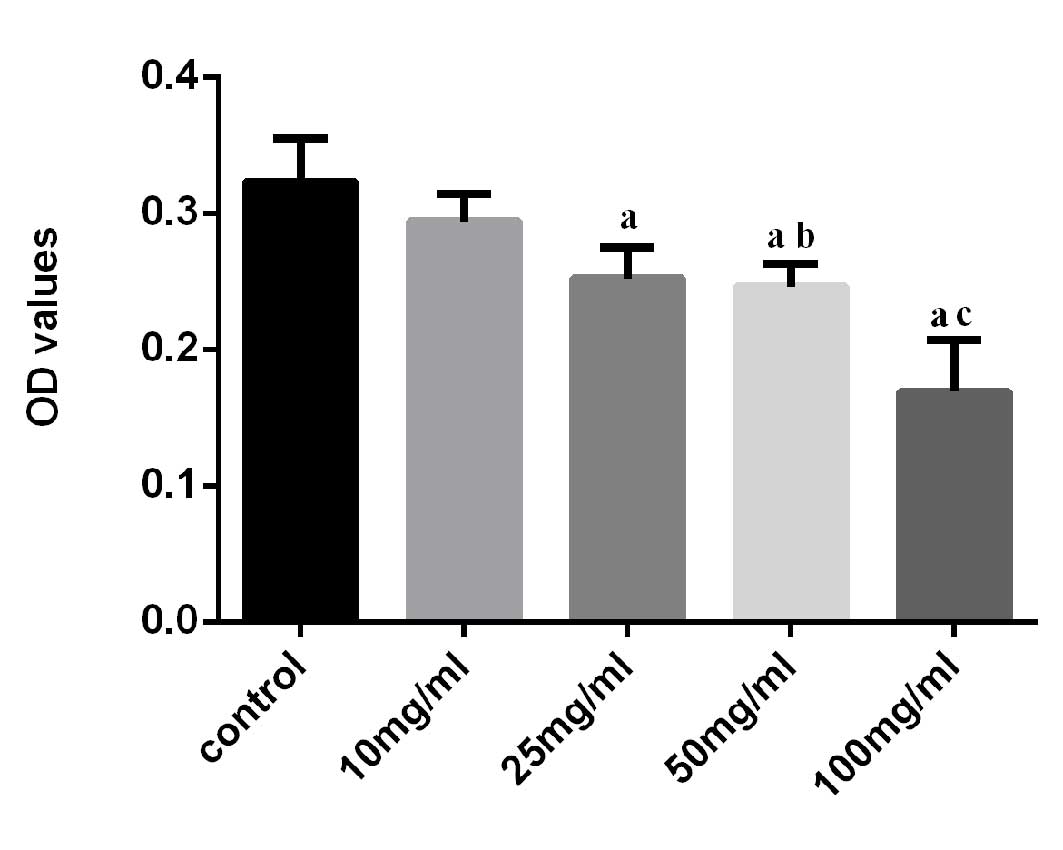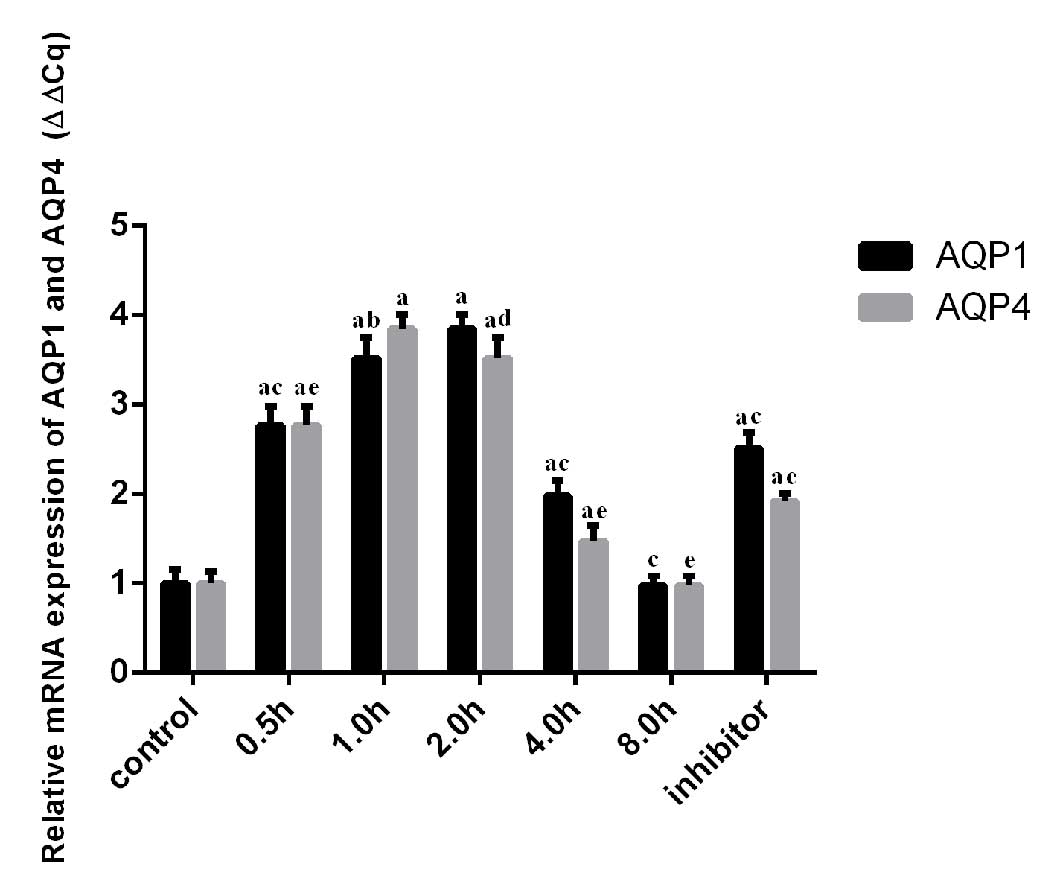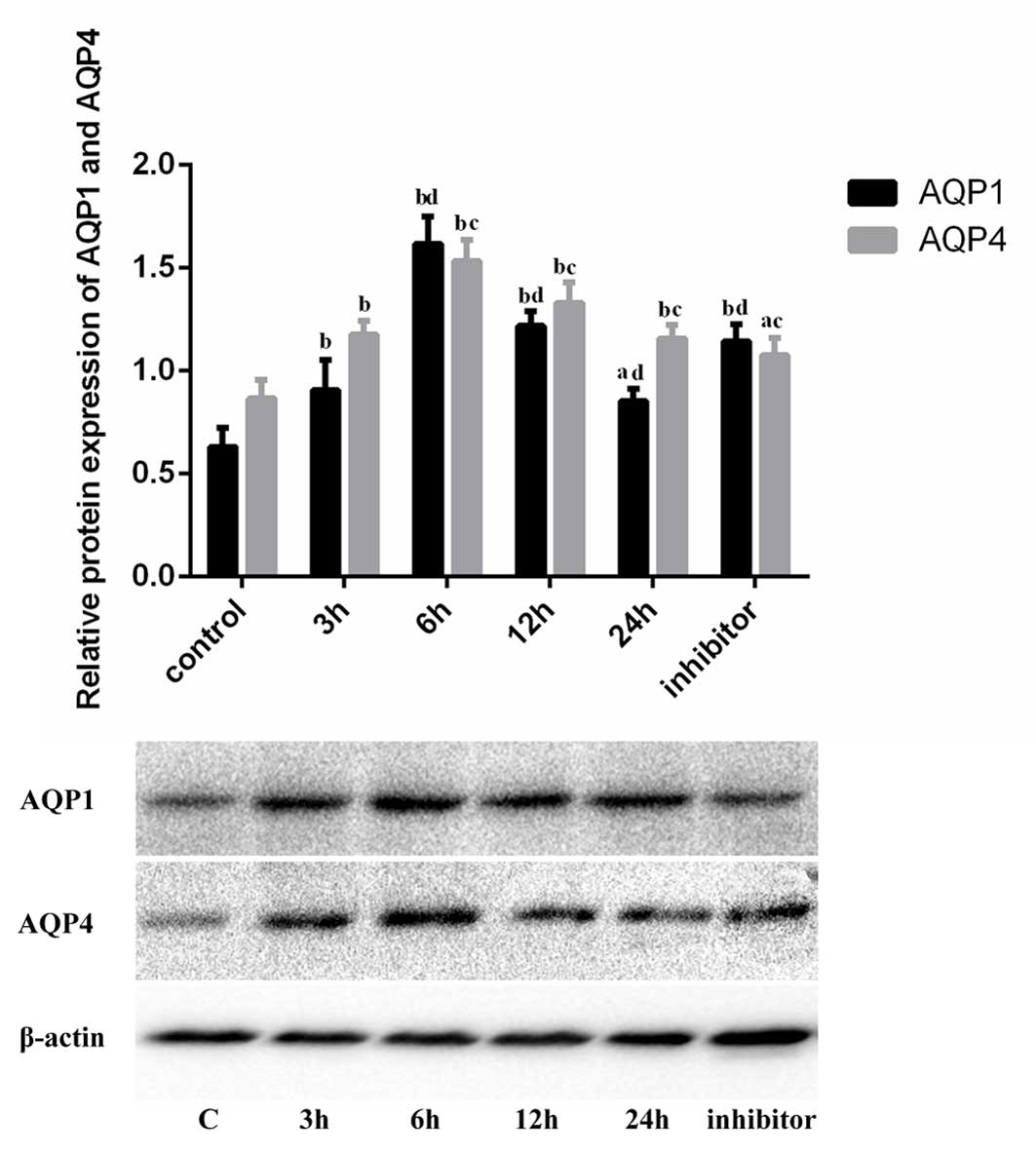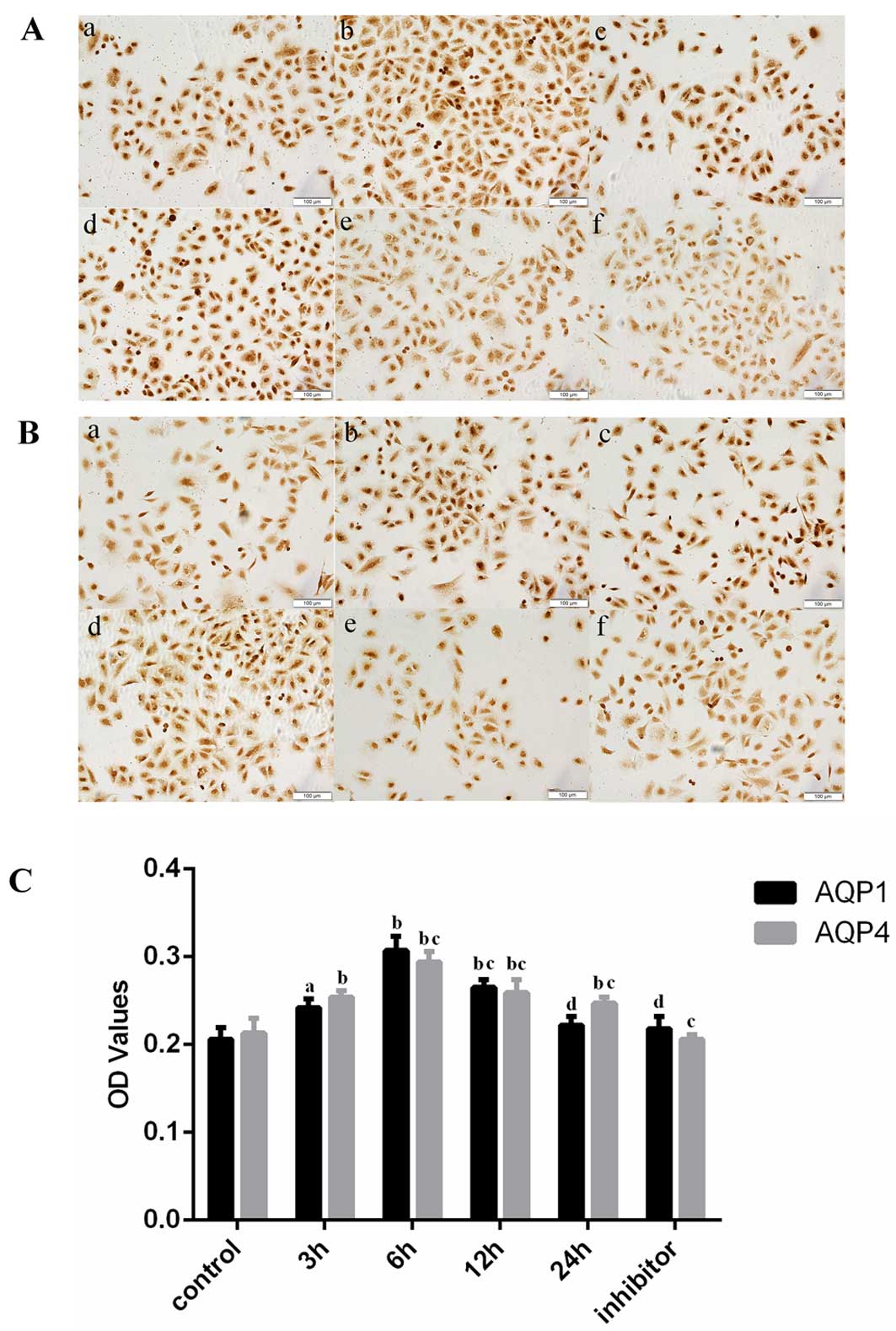|
1
|
Leung CC, Yu IT and Chen W: Silicosis.
Lancet. 379:2008–2018. 2012. View Article : Google Scholar : PubMed/NCBI
|
|
2
|
Guha N, Straif K and Benbrahim-Tallaa L:
The IARC monographs on the carcinogenicity of crystalline silica.
Med Lav. 102:310–320. 2011.PubMed/NCBI
|
|
3
|
Zhang H, Yin G, Jiang H and Zhang C:
High-dose N-acetylcysteine decreases silica-induced lung fibrosis
in the rat. J Int Med Res. 41:1179–1186. 2013. View Article : Google Scholar : PubMed/NCBI
|
|
4
|
Steenland K and Ward E: Silica: A lung
carcinogen. CA Cancer J Clin. 64:63–69. 2014. View Article : Google Scholar
|
|
5
|
Chu L, Wang T, Hu Y, Gu Y, Su Z and Jiang
H: Activation of Egr-1 in human lung epithelial cells exposed to
silica through MAPKs signaling pathways. Plus One. 8:e689432013.
View Article : Google Scholar
|
|
6
|
Ishibashi K, Kondo S, Hara S and Morishita
Y: The evolutionary aspects of aquaporin family. Am J Physiol Regul
Integr Comp Physiol. 300:R566–R576. 2011. View Article : Google Scholar
|
|
7
|
Li G, Santoni V and Maurel C: Plant
aquaporins: Roles in plant physiology. Biochim Biophys Acta.
1840:1574–1582. 2014. View Article : Google Scholar
|
|
8
|
Sahdeva R and Singh B: Insights into
structural mechanisms of gating induced regulation of aquaporins.
Prog Biophys Mol Biol. 114:69–79. 2014. View Article : Google Scholar
|
|
9
|
Preston GM and Agre P: Isolation of the
cDNA for erythrocyte integral membrane of 28 kilodaltons: Member of
an ancient channel family. Proe Natl Acad Sci USA. 88:11110–11114.
1991. View Article : Google Scholar
|
|
10
|
Verkman AS: Role of aquaporins in lung
liquid physiology. Respir Physiol Neurobiol. 159:324–330. 2007.
View Article : Google Scholar : PubMed/NCBI
|
|
11
|
Benga G: The first discovered water
channel protein, later called aquaporin 1: Molecular
characteristics, functions and medical implications. Mol Aspects
Med. 33:518–534. 2012. View Article : Google Scholar : PubMed/NCBI
|
|
12
|
Gao X, Wang G, Zhang W, Peng Q, Xue M and
Jinhong H: Expression of pulmonary aquaporin 1 is dramatically
upregulated in mice with pulmonary fibrosis induced by bleomycin.
Arch Med Sci. 9:916–921. 2013. View Article : Google Scholar : PubMed/NCBI
|
|
13
|
Zhang QY, Fu JH and Xue XD: Expression and
function of aquaporin-1 in hyperoxia-exposed alveolar epithelial
type II cells. Exp Ther Med. 8:493–498. 2014.PubMed/NCBI
|
|
14
|
Ebeling G, Bläsche R, Hofmann F, Augstein
A, Kasper M and Barth K: Effect of P2X7 receptor knockout on AQP-5
expression of type I alveolar epithelial cells. PLoS One.
9:e1002822014. View Article : Google Scholar : PubMed/NCBI
|
|
15
|
Warth A, Muley T, Meister M, Herpel E,
Pathil A, Hoffmann H, Schnabel PA, Bender C, Buness A, Schirmacher
P and Kuner R: Loss of aquaporin-4 expression and putative function
in non-small cell lung cancer. BMC Cancer. 11:1612011. View Article : Google Scholar : PubMed/NCBI
|
|
16
|
Hao XH, Wang HL, Liu HL, Zhang L and Li
YH: Effect of curcumin on expression of aquaporin-1 in lung tissue
of silicotic rats. Zhongguo Zhi Ye Yi Xue. 39:471–474. 2012.In
Chinese.
|
|
17
|
Zhang L, Hao XH, Wang HL, Zhao JY and Liu
HL: Expression and significance of aquaporin 1 in lung tissue of
silicotic rats. Zhongguo Gongye Yixue Zazhi. 25:91–93. 1612012.In
Chinese.
|
|
18
|
Livak KJ and Schmittgen TD: Analysis of
relative gene expression data using real-time quantitative PCR and
the 2(-Delta Delta C(T)) method. Methods. 25:402–408. 2001.
View Article : Google Scholar
|
|
19
|
Day RE, Kitchen P, Owen DS, Bland C,
Marshall L, Conner AC, Bill RM and Conner MT: Human aquaporins:
Regulators of transcellular water flow. Biochim Biophys Acta.
1840:1492–1506. 2014. View Article : Google Scholar
|
|
20
|
Matsuzaki T, Tajika Y, Tserentsoodol N,
Suzuki T, Aoki T, Hagiwara H and Takata K: Aquaporins: A water
channel family. Anat Sci Int. 77:85–93. 2002. View Article : Google Scholar : PubMed/NCBI
|
|
21
|
Ishibashi K: Aquaporin subfamily with
unusual NPA boxes. Biochim Biophys Acta. 1758:989–993. 2006.
View Article : Google Scholar : PubMed/NCBI
|
|
22
|
Takata K, Matsuzaki T and Tajika Y:
Aquaporins: Water channel proteins of the cell membrane. Prog
Histochem Cytochem. 39:1–83. 2004. View Article : Google Scholar : PubMed/NCBI
|
|
23
|
Singha O, Kengkoom K, Chaimongkolnukul K,
Cherdyu S, Pongponratn E, Ketjareon T, Panavechkijkul Y and
Ampawong S: Pulmonary edema due to oral gavage in a toxicological
study related to aquaporin-1, -4 and -5 expression. J Toxicol
Pathol. 26:283–291. 2013. View Article : Google Scholar : PubMed/NCBI
|
|
24
|
Alimit A, Hasan B, Lu W, Qin W, Wushouer
Q, Zhong N and Upur H: Changes in water channel aquaporin 1 and
aquaporin 5 in the small airways and the alveoli in a rat asthma
model. Micron. 45:68–73. 2013. View Article : Google Scholar
|
|
25
|
Elkjaer ML, Nejsum LN, Gresz V, Kwon TH,
Jensen UB, Frøkiaer J and Nielsen S: Immunolocalization of
aquaporin-8 in rat kidney, gastrointestinal tract, testis, and
airways. Am J Physiol Renal Physiol. 281:F1047–F1057. 2001.
View Article : Google Scholar : PubMed/NCBI
|
|
26
|
Tsukaguchi H, Weremowicz S, Morton CC and
Hediger MA: Functional and molecular characterization of the human
neutral solute channel aquaporin-9. Am J Physiol. 277:F685–F696.
1999.PubMed/NCBI
|
|
27
|
La Porta C: AQP1 is not only a water
channel: It contributes to cell migration through
Lin7/beta-catenin. Cell Adh Migr. 4:204–206. 2010. View Article : Google Scholar : PubMed/NCBI
|
|
28
|
Calero C, López-campos JL, Izouierdo LG,
Sánchez-Silva R, López-Villalobos JL, Sáenz-Coronilla FJ,
Arellano-Orden E, Montes-Worboys A and Echevarría M: Expression of
aquaporins in bronchial tissue and lung parenchyma of patients with
chronic obstructive pulmonary disease. Multidiscip Respir Med.
9:292014. View Article : Google Scholar : PubMed/NCBI
|
|
29
|
Shen Y, Wang X, Wang Y, Wang X, Chen Z,
Jin M and Bai C: Lipopolysaccharide decreases aquaporin 5, but not
aquaporin 3 or aquaporin 4, expression in human primary bronchial
epithelial cells. Respirology. 17:1144–1149. 2012. View Article : Google Scholar : PubMed/NCBI
|
|
30
|
Jardim MJ, Dailey L, Silbajoris R and
Diaz-Sanchez D: Distinct microRNA expression in human airway cells
of asthmatic donors identifies a novel asthma-associated gene. Am J
Respir Cell Mol Biol. 47:536–542. 2012. View Article : Google Scholar : PubMed/NCBI
|
|
31
|
Zhu B, Yang L and Chen T: Relationship
between AQP4 mRNA expression in bronchial epithelium of patients
with COPD and the airway inflammation. Xi'an Jiaotong Daxue Xuebao
(Yexueban). 29:656–658. 6782008.In Chinese.
|
|
32
|
McCoy E and Sontheimer H: Expression and
function of water channels (aquaporins) in migrating malignant
astrocytes. Glia. 55:1034–1043. 2007. View Article : Google Scholar : PubMed/NCBI
|
|
33
|
Grainge CL and Davies DE: Epithelial
injury and repair in airways diseases. Chest. 144:1906–1912. 2013.
View Article : Google Scholar : PubMed/NCBI
|
|
34
|
Xie Y, Wen X, Jiang Z, Fu H, Dai L and Han
H: Correlation between exression of aquaporin 4 and migration
ability and growth of lung adenocarcinoma cells. Huazhong Keji
Daxue Xuebao (Yixueban). 40:682–685. 2011.In Chinese.
|
|
35
|
Mola MG, Nicchia GP, Svelto M, Spray DC
and Frigeri A: Automated cell-based assay for screening of
aquaporin inhibitors. Anal Chem. 81:8219–8229. 2009. View Article : Google Scholar : PubMed/NCBI
|
|
36
|
Verkman AS, Anderson MO and Papadopoulos
MC: Aquaporins: Important but elusive drug targets. Nat Rev Drug
Discov. 13:259–277. 2014. View Article : Google Scholar : PubMed/NCBI
|
|
37
|
Jullienne A and Badaut J: Molecular
contributions to neurovascular unit dysfunctions after brain
injuries: Lessons for target-specific drug development. Future
Neurol. 8:677–689. 2013. View Article : Google Scholar
|
|
38
|
Moon HG, Zheng Y, An CH, Kim YK and Jin Y:
CCN1 secretion induced by cigarette smoking extracts augments IL-8
release from bronchial epithelial cells. Plos One. 8:e681992013.
View Article : Google Scholar : PubMed/NCBI
|
|
39
|
von Bülow J: Aquaporins-water channels in
the cell membrane and therapeutic targets. Med Monatsschr Pharm.
36:86–94; quiz 95–96. 2013.In German.
|
|
40
|
Xie Y, Wen X, Jiang Z, Fu HQ, Han H and
Dai L: Aquaporin 1 and aquaporin 4 are involved in invasion of lung
cancer cells. Clin Lab. 58:75–80. 2012.PubMed/NCBI
|
|
41
|
Frede J, Fraser SP, Oskay-Özcelik G, Hong
Y, Ioana Braicu E, Sehouli J, Gabra H and Djamgoz MB: Ovarian
cancer: Ion channel and aquaporin expression as novel targets of
clinical potential. Eur J Cancer. 49:2331–2344. 2013. View Article : Google Scholar : PubMed/NCBI
|













